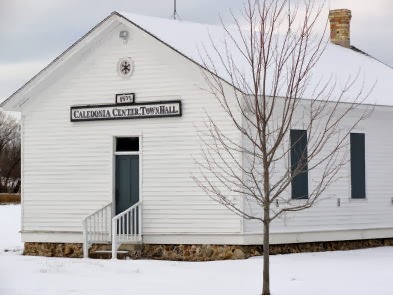This article was originally posted on the Caledonia Patch and was by
Denise Lockwood
(Editor), .
The Village of Caledonia may see a new business built and one expand within the
Franksville Industrial Park, but the project comes with a potential $8.9
million catch for taxpayers.
The Village Board voted 4 to 1 to move forward with a feasibility
report that could create a tax incremental finance (TIF) district to
expand the Franksville Industrial Park by 390 acres. Jerry Griswold
opposed the project, but Jim Dobbs, Tom Weatherston, Ron Coutts, and
Kevin Wanggaard approved it.
New Jobs, New TIF?
The report, which was written by Ehlers, a consulting firm the
Village hired, calls for the expansion to occur in two phases, one that
includes 152 acres and one that includes 238 acres. The first expansion
would mostly serve two unnamed businesses, according to the report.
The two developments are expected create 70 jobs with an annual
compensation between $35,000 and $55,000. And with the total build out
of both phases, the district is expected to “spur” $66 to $88 million in
new, and taxable, industrial development.
The total cost of the infrastructure improvements carries a price tag
of $12 million. However, 25 percent of the cost would likely be paid
for with grants, and the Village or the developer would finance the
remaining cost of the infrastructure project, which would cost $8.9
million for both phases. The money would be used to improve the truck
route, utilities, roads, sewer and water service, and add a rail spur,
signage and lighting. However, the project doesn’t have to be completed
all at once, said an official with Ehlers.
What is a TIF District?
A TIF district is a development tool municipalities can use to
attract business. The way it works is that a financing district is
created and a base value of that district is established by the taxing
jurisdictions. The increased value of the property is still charged at
the base rate, but the district uses the increased tax revenue to pay
for the infrastructure projects.
This means those taxing entities (Village, County, Racine Unified and
Gateway) still receive the same amount of tax revenue before the
district was created, but the increased tax revenue pays for the
infrastructure costs over a 20-year period.
Why use a TIF District?
Jenny Trick, of the Racine County Economic Development Corporation,
told the Village Board the names of the businesses are confidential.
However, one is ready to build immediately and the other would likely
build within the year, she said.
“The value of this discussion is not only through a recruitment
perspective, but also a retention perspective,” Trick said. “You have a
number of businesses that have already made an investment there and they
are going to want to grow. And there is value in having your investment
be retained. So you want to make sure the business park is appropriate
and is an attractive business park.”
Village Board Member Jerry Griswold said he's against using taxpayer money to fund a project like this.
“I say let the developer invest their money, why should the taxpayer
fund this?” Griswold said. “This thing has already gone way to far in my
book…. In my mind we need to do the basics, highway, fire, and
police—not get involved in development.”
But part of the condition of creating a taxing district is that using
the tax increment to fund infrastructure projects can only be used if
the development “would either have not occurred, not occurred in the
same timeframe, or would not have occurred with the same value,”
according to the report.
Wanggaard supported the project.
“This area is already designated for commercial use,” he said. “It’s
not as good of an area as it should have been, but we’ve got to deal
with what we’ve got. And we’ve got to utilize what we’ve got instead of
try to build something else…. If we have to look at getting companies
here, which we do. I think that’s the place to do it.”
What's the next step?
The approval of the report doesn’t mean the project itself is
approved, but it does mean the Village can move forward with holding
public hearings on the contents of the report. In order to create the
district, a number of entities would need to approve the project,
including the Joint Review Board, the Community Development Authority,
and the Village Board, and several public hearings would need to be
held.

No comments:
Post a Comment